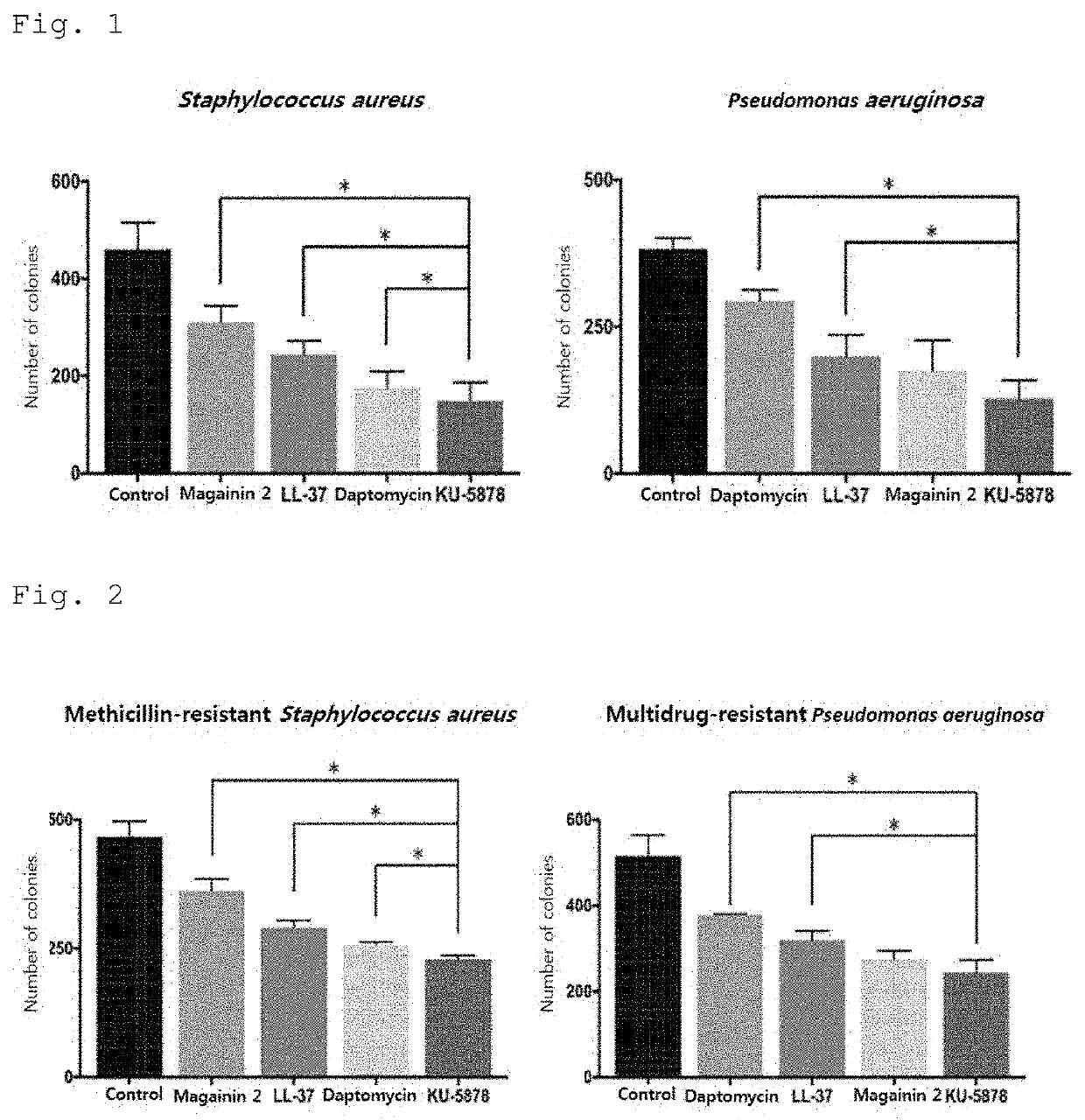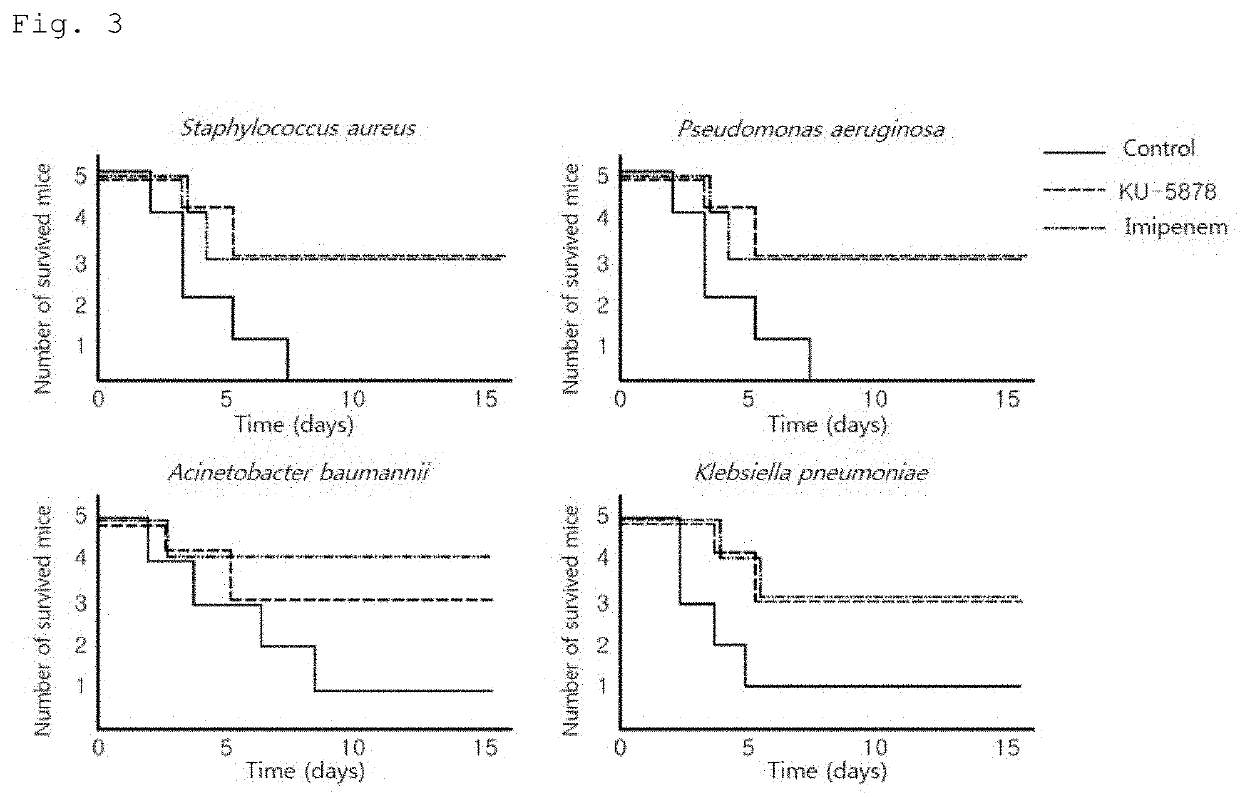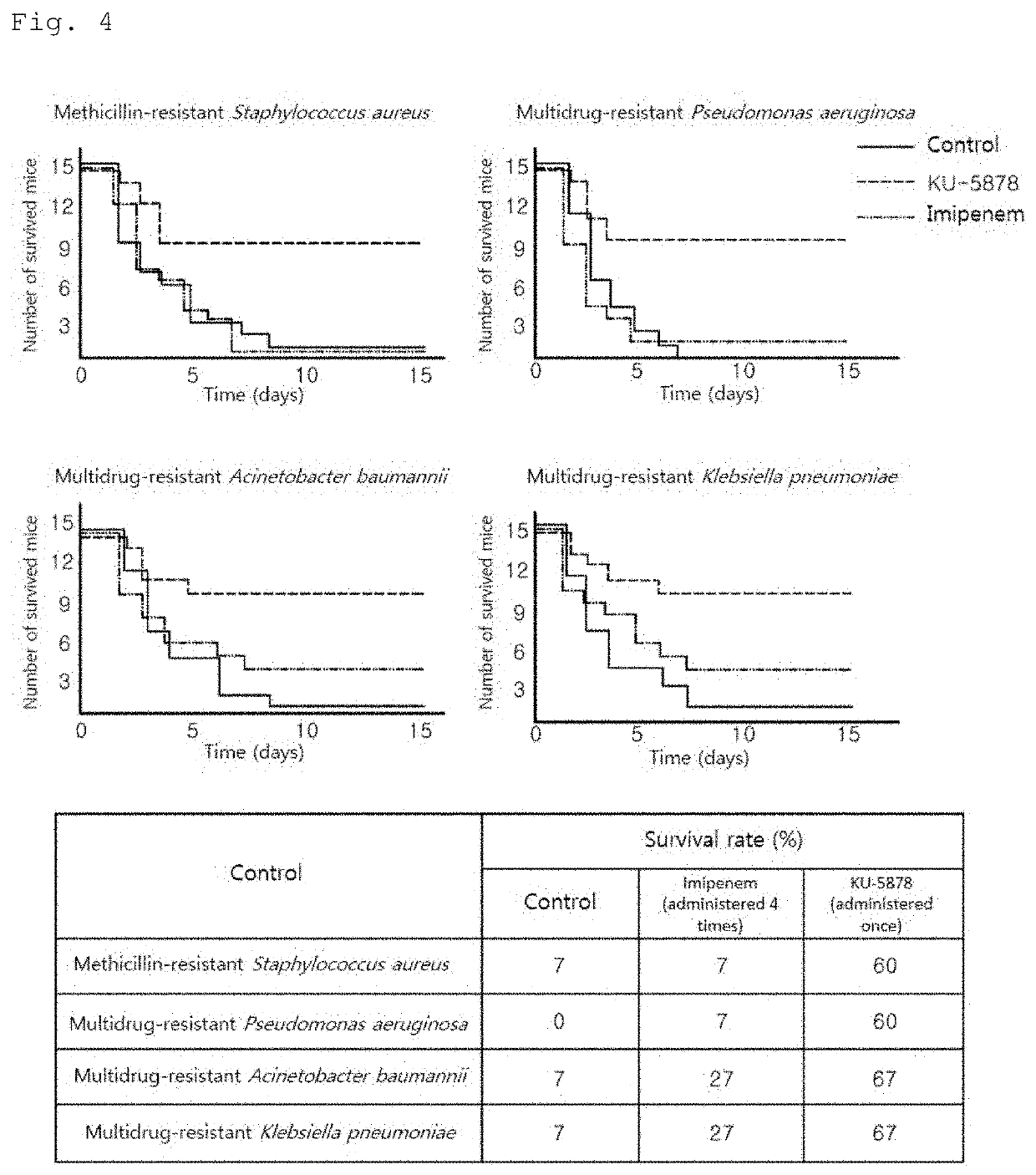Romo1-derived antimicrobial peptides and variants thereof
a technology of antimicrobial peptides and romo1 protein, which is applied in the direction of antibacterial agents, peptide sources, peptide/protein ingredients, etc., can solve the problems of bacteria acquiring antibiotic resistance, difficult sepsis treatment, bacteria infections, etc., and achieves low resistance probability, high antibacterial activity, and high antibacterial activity.
- Summary
- Abstract
- Description
- Claims
- Application Information
AI Technical Summary
Benefits of technology
Problems solved by technology
Method used
Image
Examples
example 1
n of Antibacterial Activities of Romo1-Derived Peptides and Identification of Optimal Peptides
[0096]Romo1 protein comprises two α-helices. The present inventors synthesized the α-helix 2 region having both hydrophilicity and hydrophobicity, and evaluated the antibacterial activity thereof using minimum bactericidal concentration (MBC) assay. The α-helix 2 region was named KU-5279 (the 52-79 amino acid region of Romo1 protein). Then, in order to identify peptides that are beneficial for human application and have excellent antibacterial activity, the present inventors synthesized several peptides comprising a sequence of contiguous amino acids starting at any amino acid selected from the 52-79 amino acid region of Romo1 protein, and comparatively evaluated the antibacterial activities of the peptides by minimum bactericidal concentration assay (See Table 1 below for information on each peptide). Evaluation of the antibacterial activity of each peptide by minimum bactericidal concentr...
example 2
n of Antibacterial Activity of KU-5878
[0101]2-1. Evaluation of Antibacterial Activity Against Various Bacteria
[0102]In order to identify the type of bacteria against which the peptide comprising the 52-79 amino acid region of the Romo1 protein or a portion of the region and confirmed to have antibacterial activity in Example 1 exhibits bactericidal activity, KU-5878 was selected as a representative among the synthetic peptides shown in Table 1 above, and the antibacterial activities thereof against the bacteria shown in Table 2 below were measured using minimum bactericidal concentration assay. The minimum bactericidal concentration assay was the same as the method used in Example 1.
[0103]Specifically, each type of bacteria was cultured in 3% (w / v) TSB (Tryptic Soy Broth) liquid medium at 37° C. and 200 rpm for 4 hours, and then further cultured under the same conditions for 3 hours to a concentration of 5×106 CFU / ml. Strain solutions were prepared by diluting each of the further cu...
example 3
n of Toxicity of KU-5878
[0118]In order to confirm whether the peptide comprising the 52-79 amino acid region of the Romo1 protein or a portion of the region and confirmed to have bactericidal activity against the gram-positive, gram-negative and multidrug-resistant bacteria in Examples 1 and 2 is applicable to a subject, the toxicity of the peptide was measured. In the following experiment, KU-5878 was selected as a representative among the synthetic peptides shown in Table 1, and the toxicity of KU-5878 was evaluated.
[0119]3-1. Evaluation of Toxicity to Human Vascular Endothelial Cells (HUVECs)
[0120]Human vascular endothelial cells (HUVECs) were cultured in a 96-well microplate, and MTT (3-(4,5-dimethylthiazol-2-yl)-2,5-diphenyltetrazolium bromide) reagent was dissolved in PBS at a concentration of 2 mg / ml and then sterile-filtered through a 0.2-μm membrane filter. PBS was used as a control.
[0121]The HUMEC medium was replaced with fresh medium, and KU-5878, melittin or magainin 2 w...
PUM
| Property | Measurement | Unit |
|---|---|---|
| concentrations | aaaaa | aaaaa |
| concentration | aaaaa | aaaaa |
| wavelength | aaaaa | aaaaa |
Abstract
Description
Claims
Application Information
 Login to View More
Login to View More - R&D
- Intellectual Property
- Life Sciences
- Materials
- Tech Scout
- Unparalleled Data Quality
- Higher Quality Content
- 60% Fewer Hallucinations
Browse by: Latest US Patents, China's latest patents, Technical Efficacy Thesaurus, Application Domain, Technology Topic, Popular Technical Reports.
© 2025 PatSnap. All rights reserved.Legal|Privacy policy|Modern Slavery Act Transparency Statement|Sitemap|About US| Contact US: help@patsnap.com



